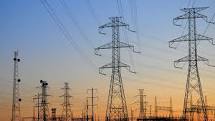Let me stress from the start that one of the main outcomes of an electric PV initiative is a substantial decrease in the carbon footprint of the consumers. I will not expand on this issue in the current post because of the space limitations but let me stress that each KWH produced from fossil fuels produces about 1 kilogram of carbon dioxide. Therefore if Lebanon can install a PV base capable of producing say 1 Billion KWH then our contribution towards cutting down on carbon emissions would total about 1 Million Tons each year. My rough estimate is that total Lebanese carbon emissions are slightly over 20 million tons each year and thus a plan similar to the following guidelines could reduce the Lebanese carbon emissions by about 5%.
Let us start this small exercise by looking at the electricity supplied in Lebanon by source. Just over 9000 GWH is supplied by EDL, another 4500 GWH is self generated and it is usually estimated that suppressed demand is under a 1000 GWH. To add all of this up implies that Lebanon is in need of about 14500 GWH which translates into a minimum of 1600 MW. The peak load is often estimated at 2000 MW plus the 33% self generation which adds up to about 2600 MW.
EDL, as everyone knows, operates at a large deficit that at times approaches $2 Billion a year. The three basic reasons for this huge deficit are: (1) Technical losses of capacity that is equal to 15% (2) 20% loss due to non technical reasons i.e. not billed and (3) an artificially low electric rate of only 4.6 cents per KWH for the households that consume 500 KWH per month.
The most obvious measures that must be taken by EDL are: (1) Phase in an increase that would bring the average rate for the first 500 KWH to about 8-10 cents. (2) The technical losses are very high by international standards. The 15% loss could easily be brought down to 10%. If that can be accomplished then that would provide over a $100 million in revenue and (3) no electricity users should be allowed to escape paying the going rate of the electricity that they have consumed.
Short of the above measures that could eliminate most and probably all the deficit EDL and the Lebanese government have the moral duty and obligation to increase the proportion of electricity provided by the state instead of the dirt self generation. One simple solution is an implementation of a Photo Voltaic initiative whose total expense over say 2-3 years would be under $2 billion and that can easily increase the amount of electricity supplied by over 1.1 billion KWH and a potential annual income of $100 million.
So how to do the above? Simply fund a quasi public agency with installing for free the equivalent of 200,000 PV installations whose average output per year 6000 KWH. It is estimated that each of these units can be installed within one day by a work force of 6-8 workers. It is further estimated that this task can be accomplished within 2 years by about 300 such work groups each of whom can install 300 units a year at a total cost of about $10,000 per system.
As is evident from the above the current $2 billion that is wasted on EDL subsidies could be diverted over time, say 2 years, to build a 200,000 unit PV infrastructure with a capacity of 1.2 Billion KWh that is emission free and that will generate an estimated income of over a $100 million per annum, which is an acceptable ROI.
If the government can find the will to implement all the above:
(A)Increase the electricity rate to at least 8cents per KWH for the first 500 KWH per household
(B)Cut down on technical losses from the current 15% to about 19%
(C)Insist on making all users pay for the electricity consumed
(D)Promote the PV initiative as outlined
Then within two years EDL would be on solid financial footing, self generated electricity would be cut in half and EDL would have the financial strength to invest in a modern smart grid.

Leave a Reply
You must be logged in to post a comment.